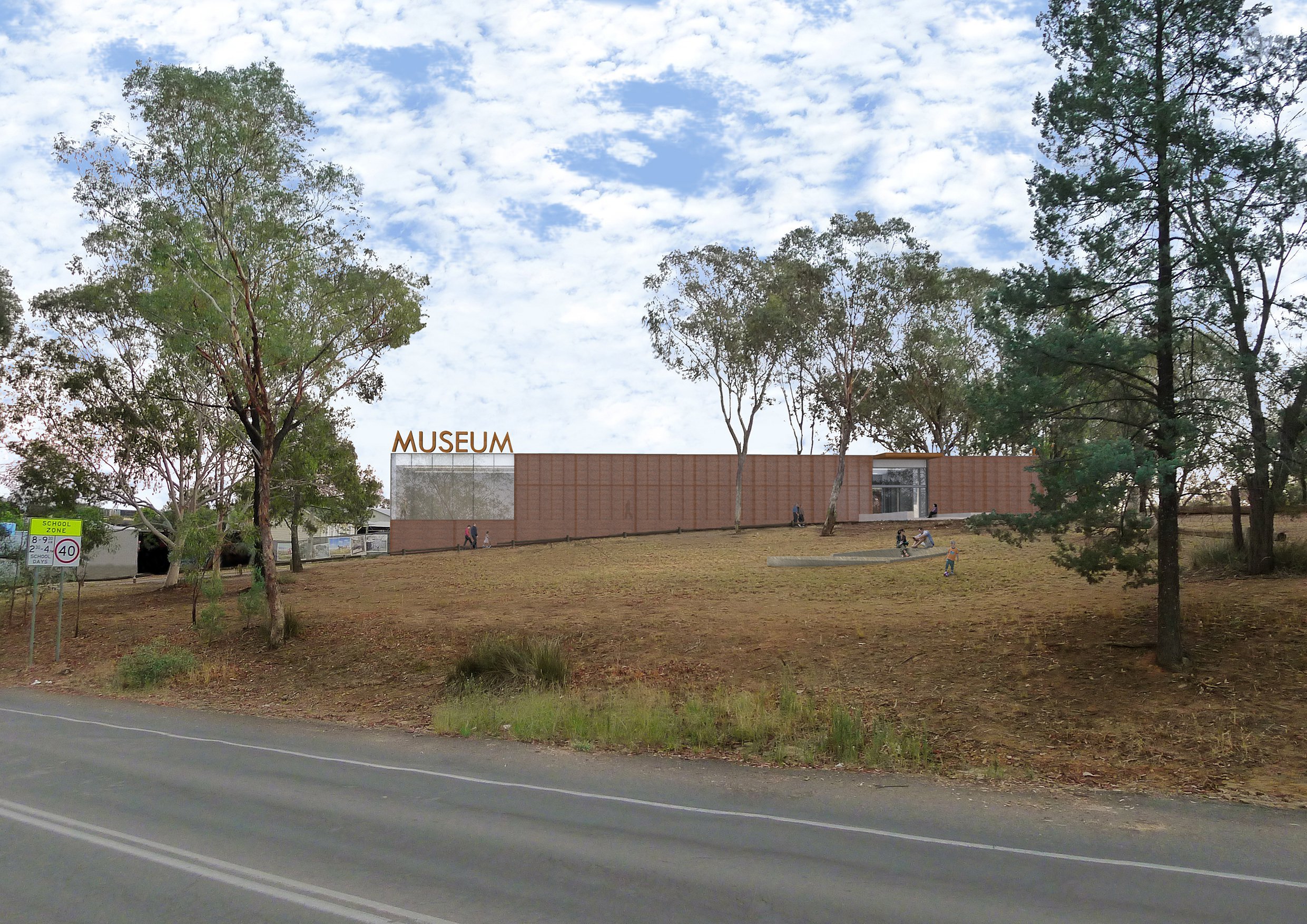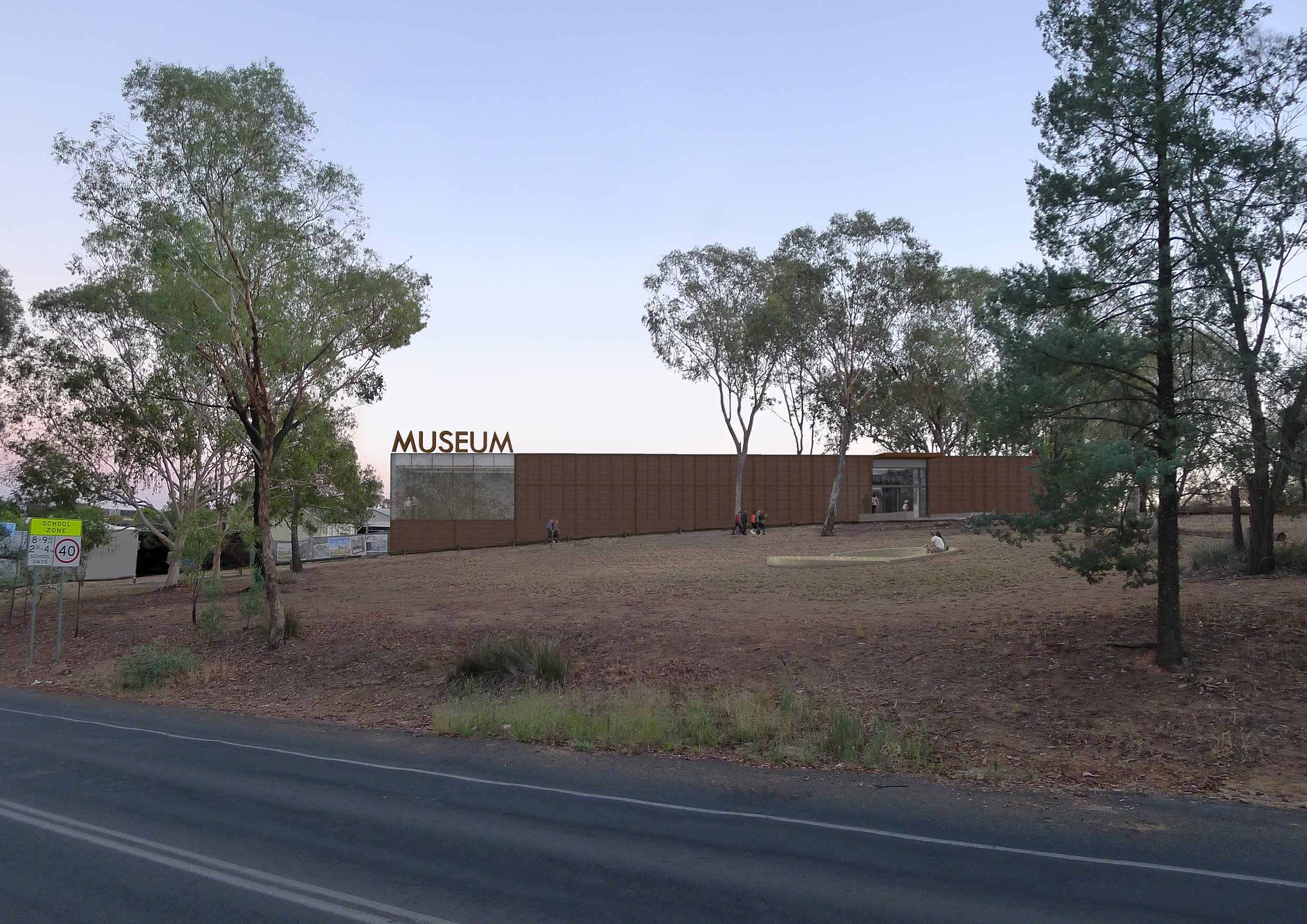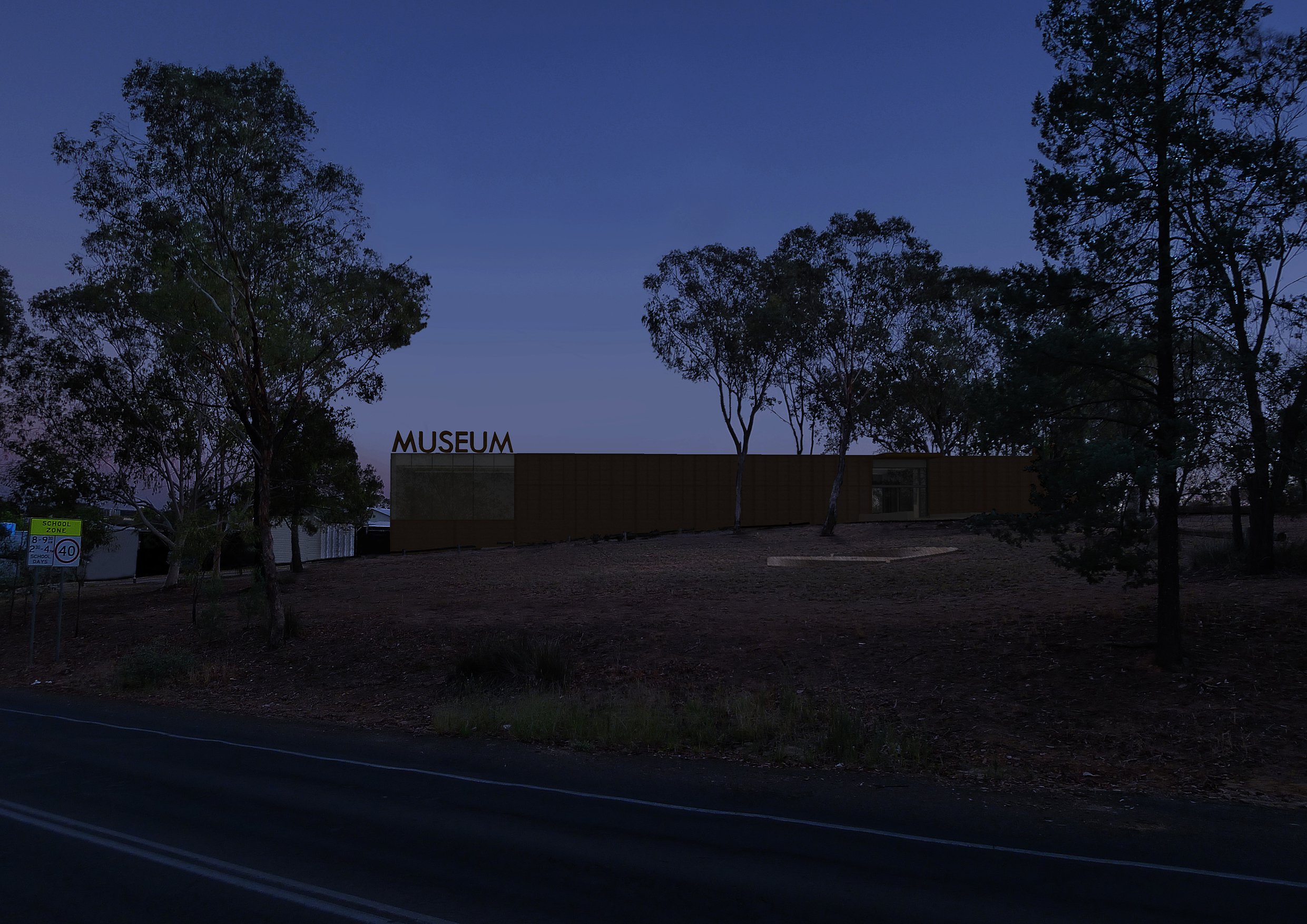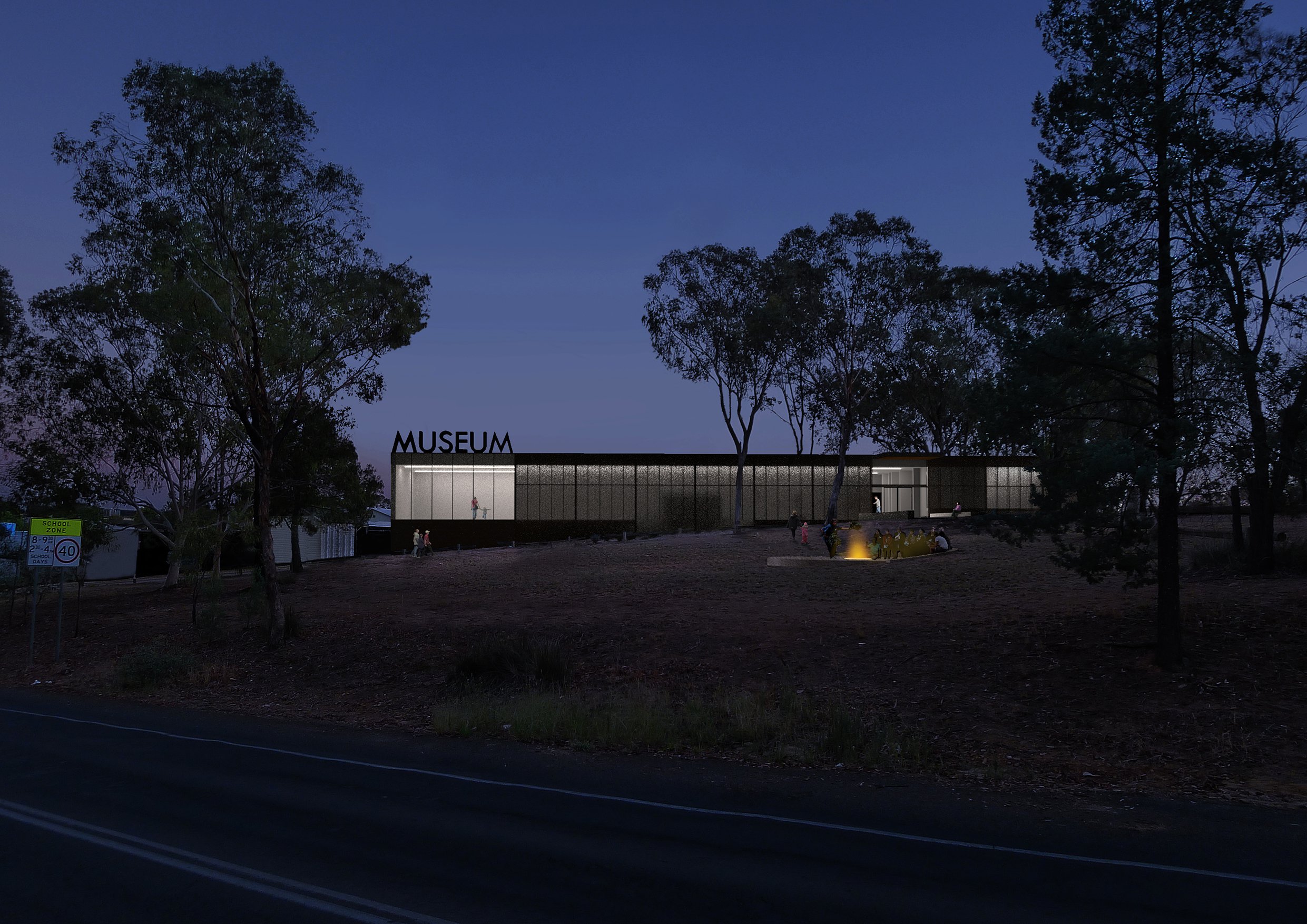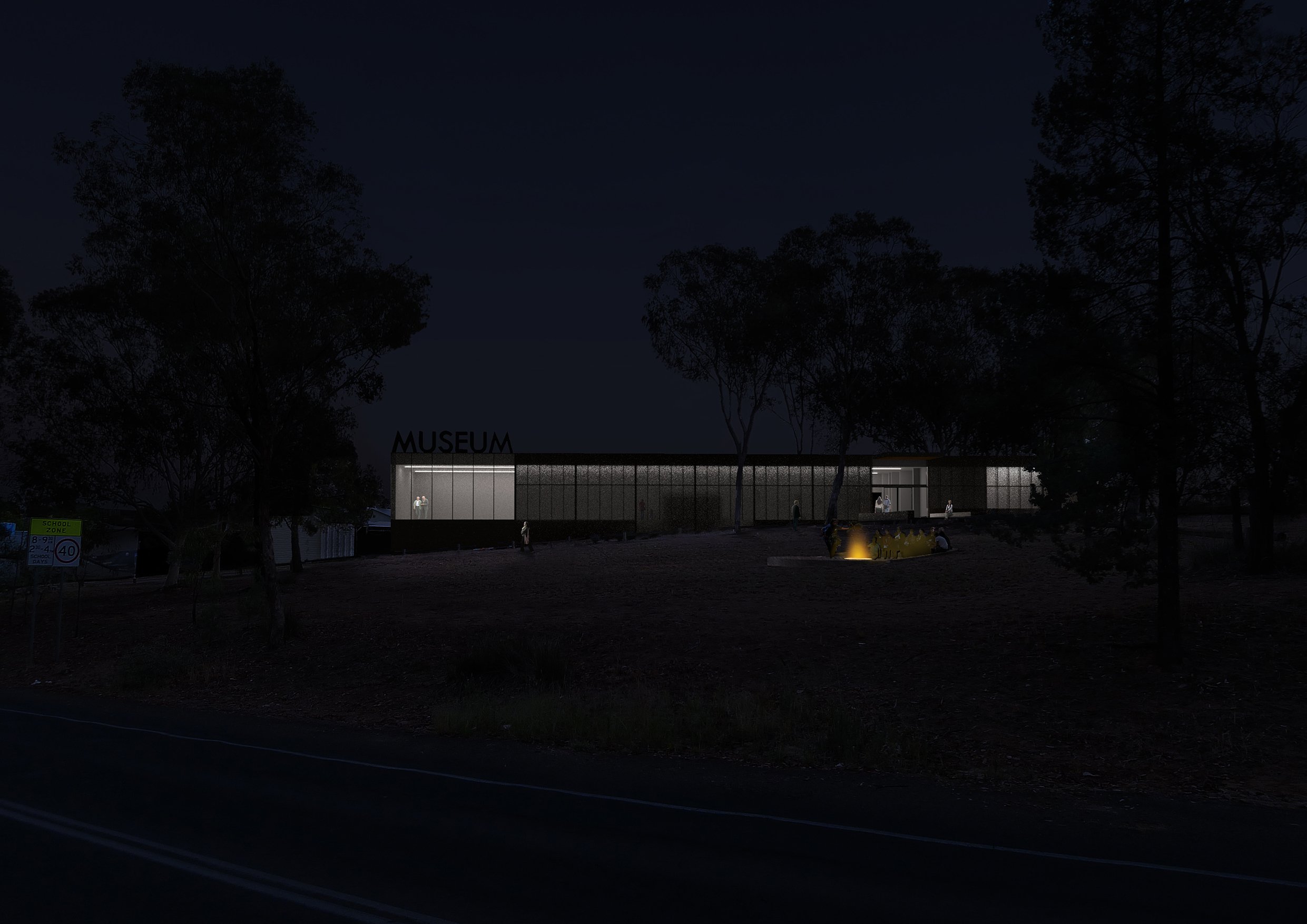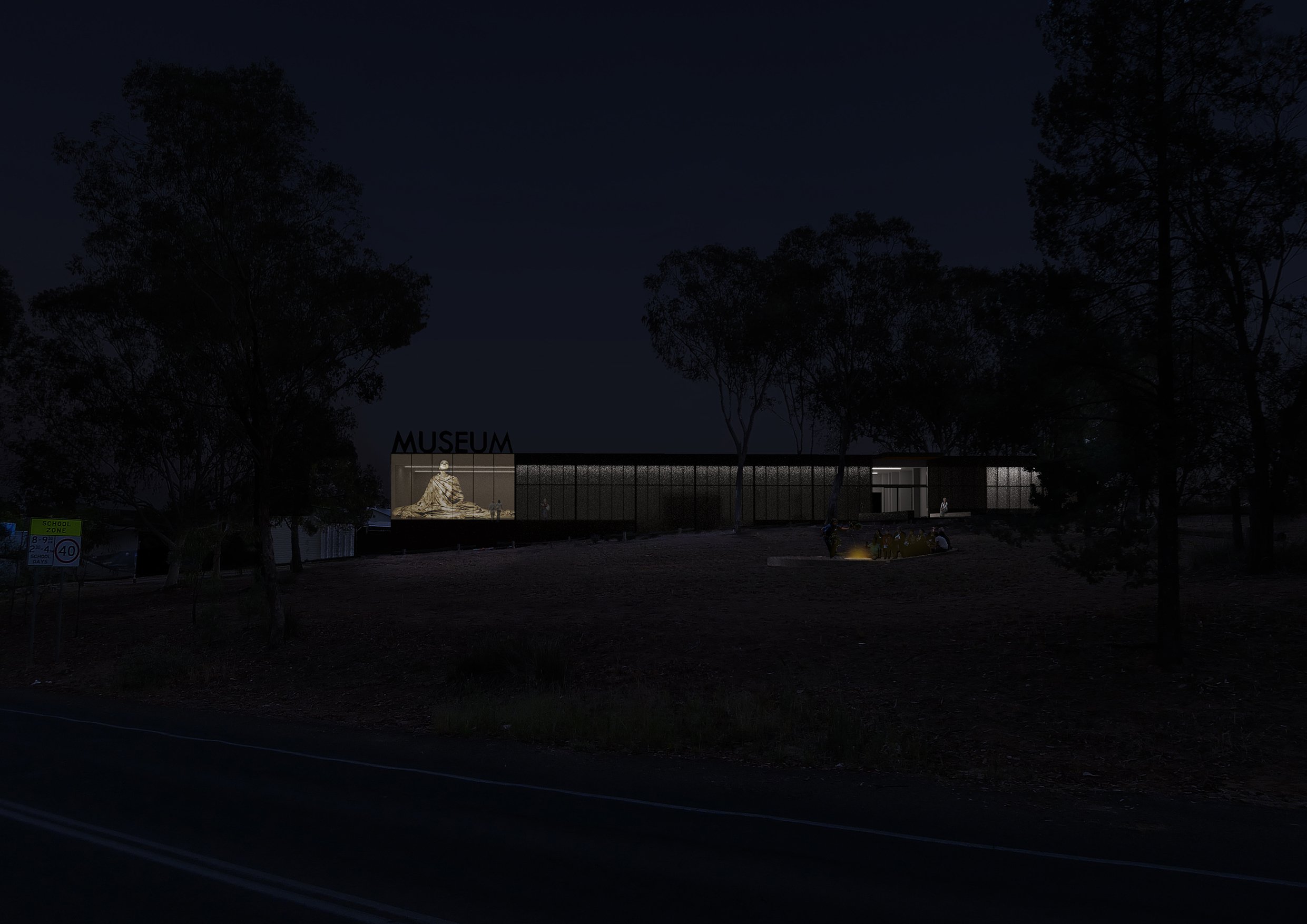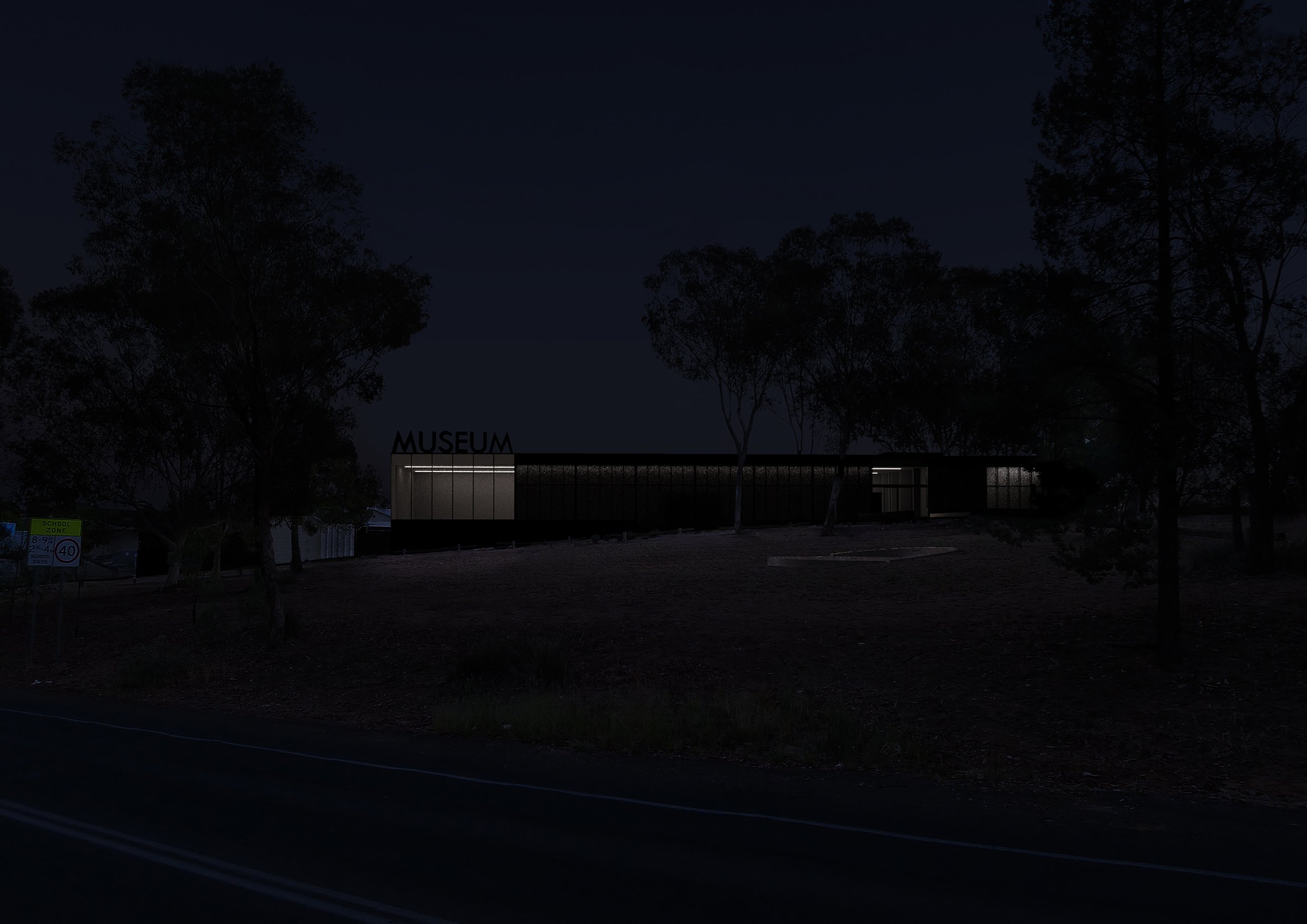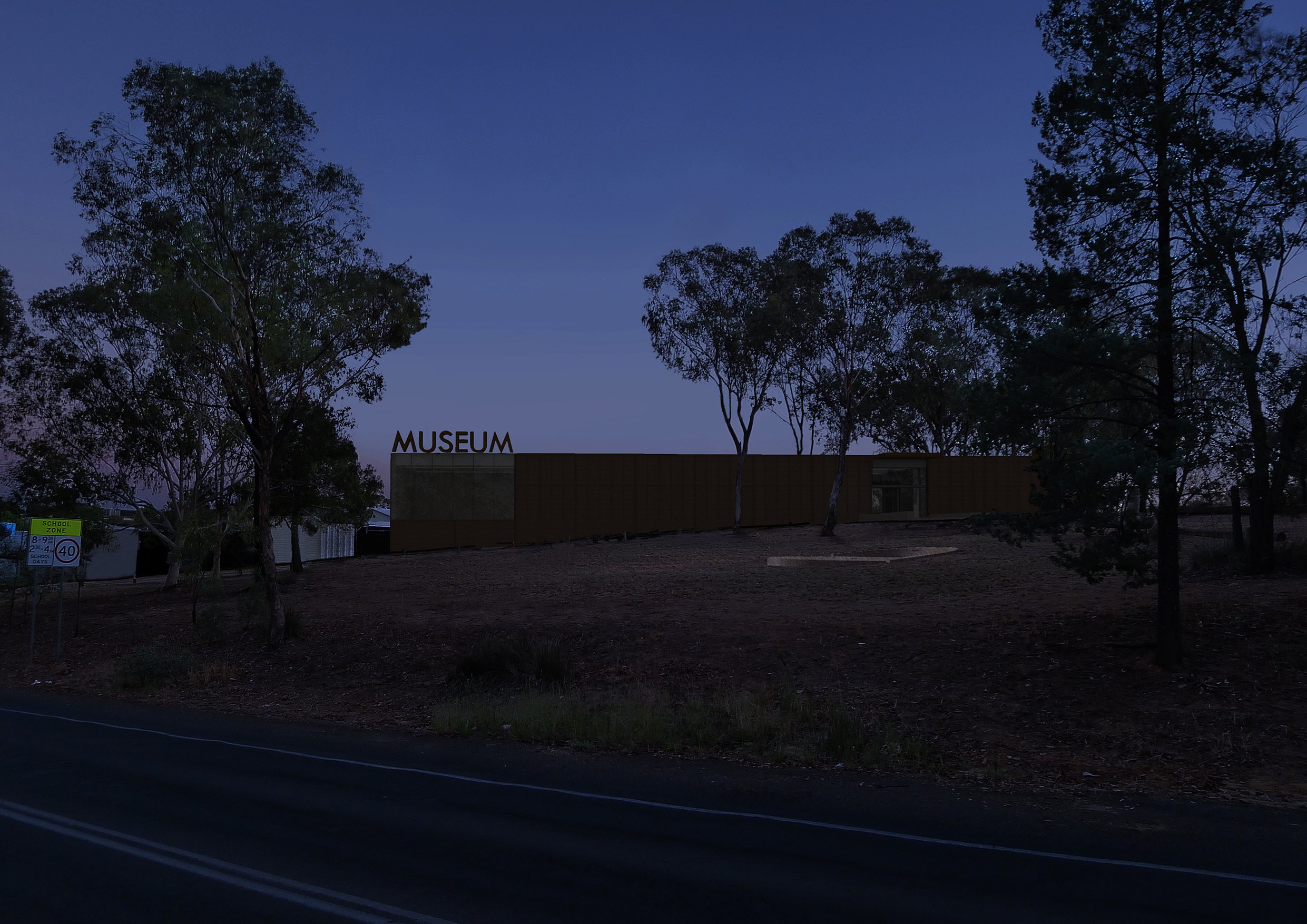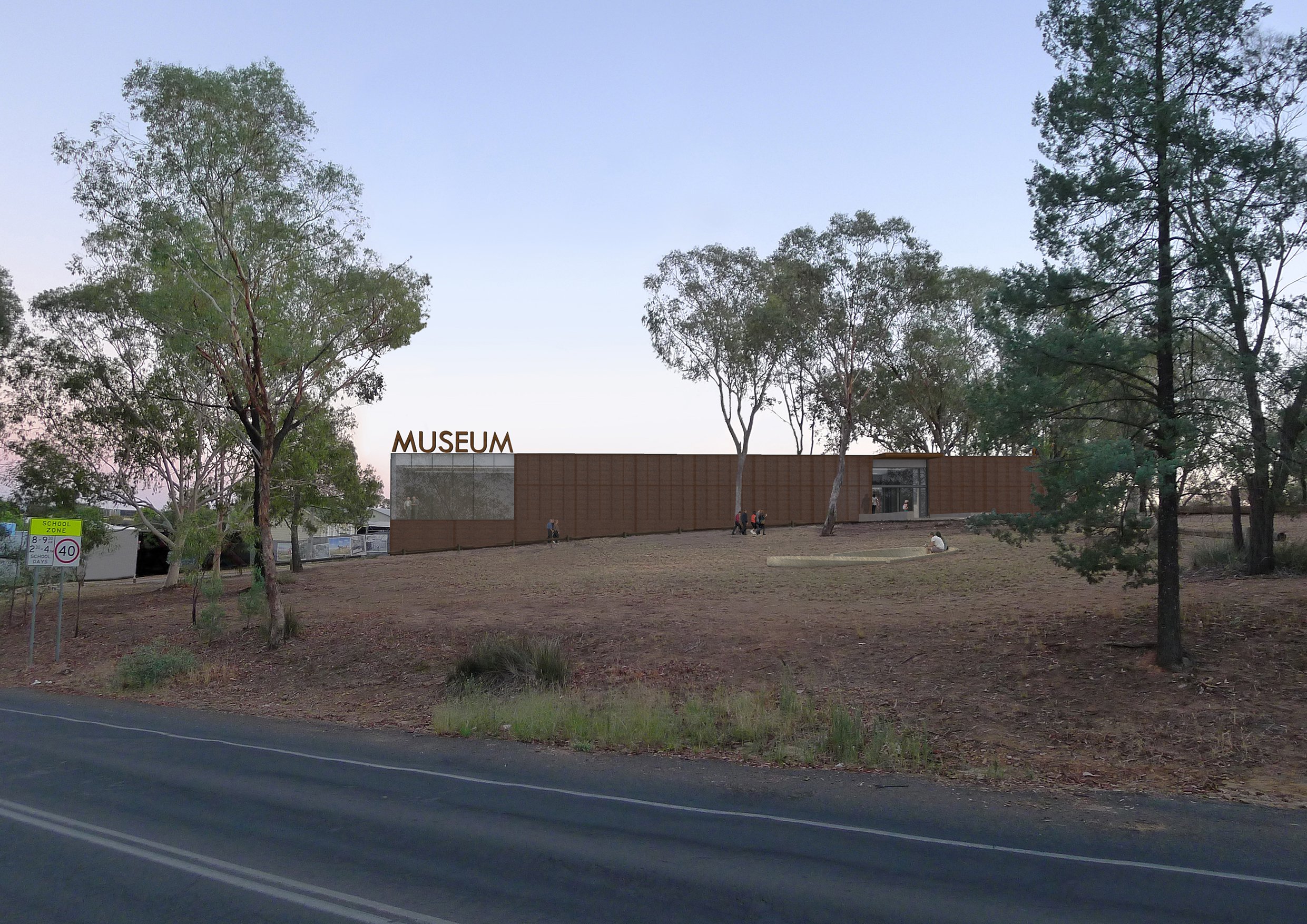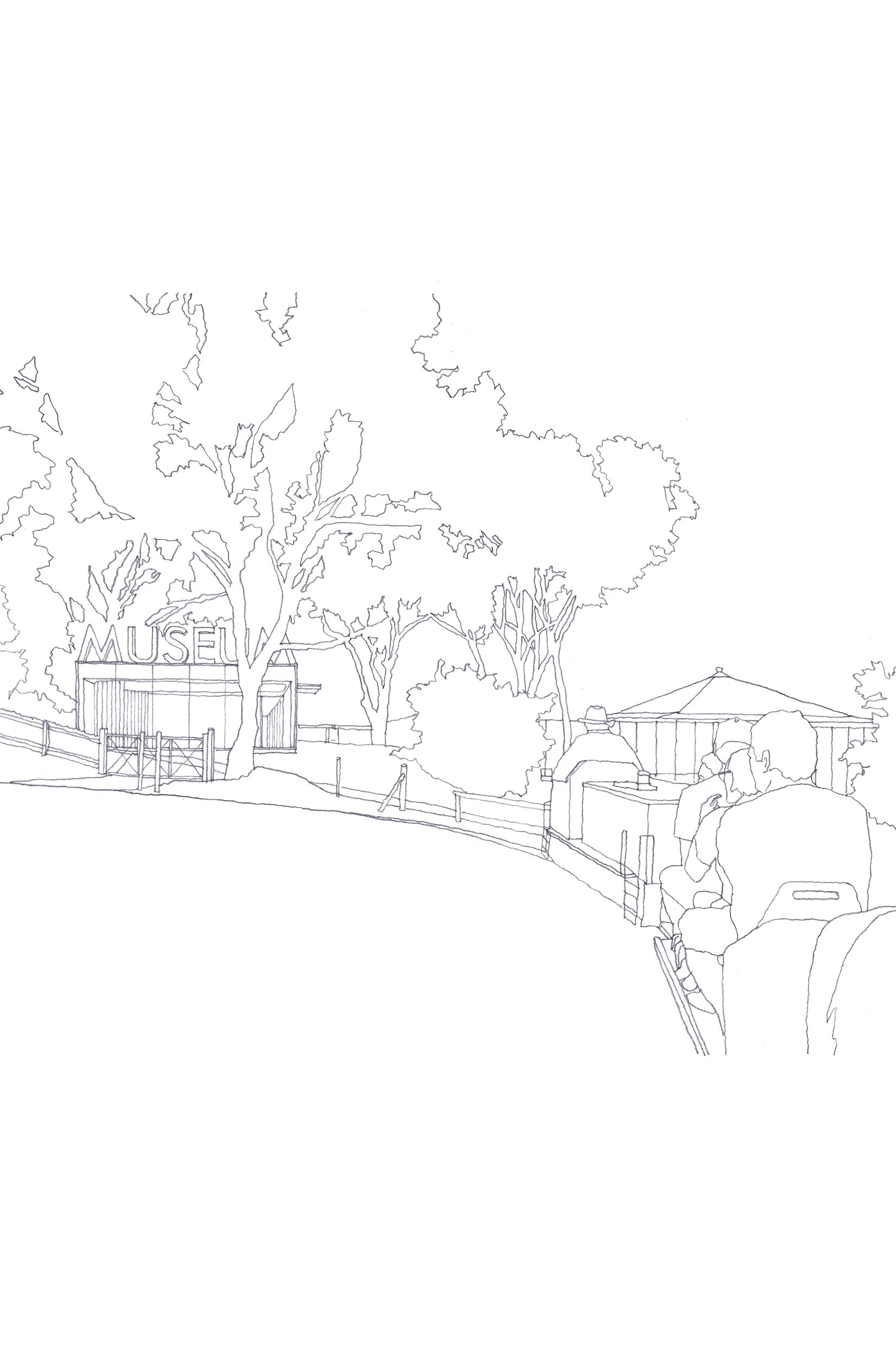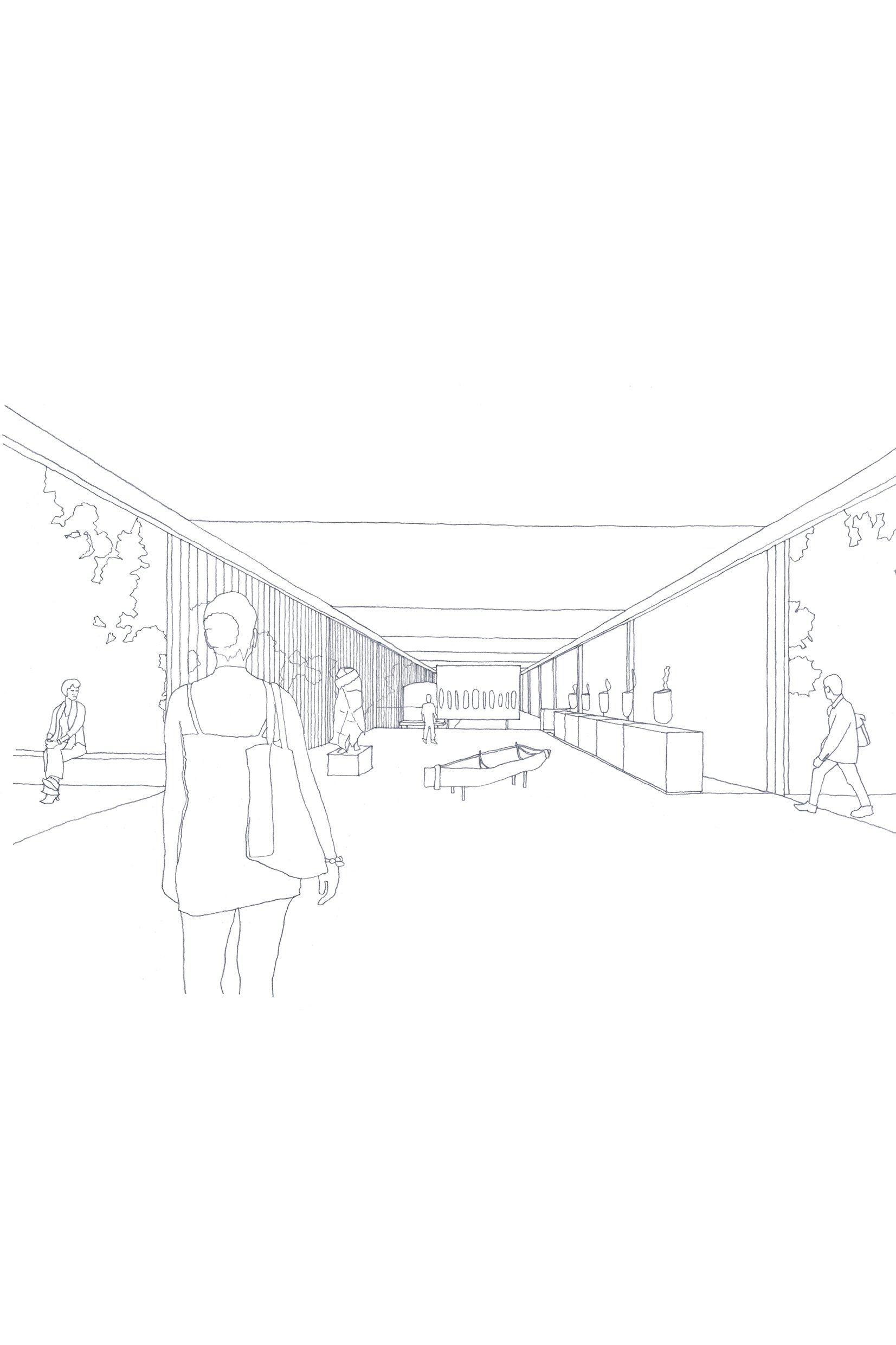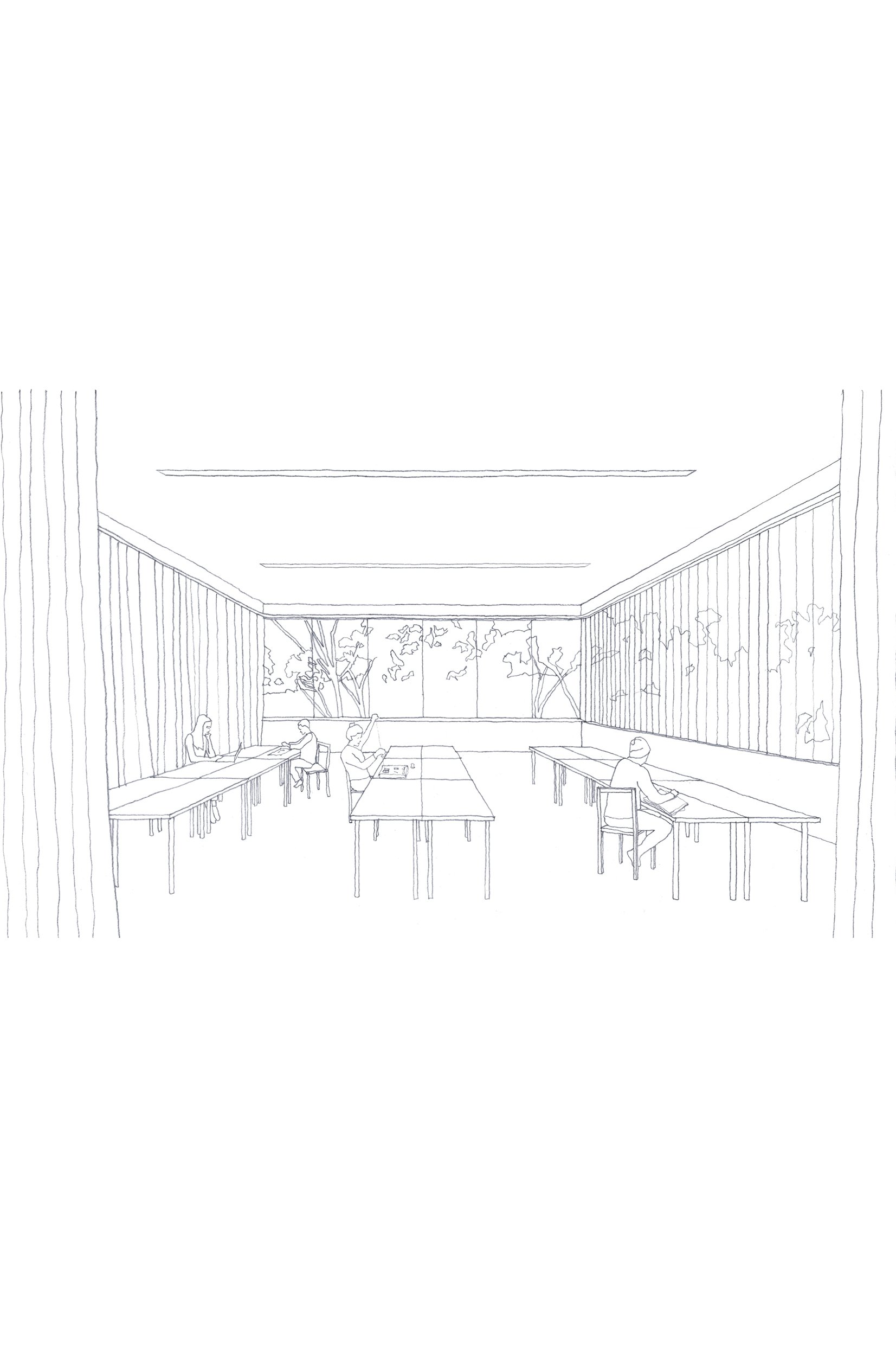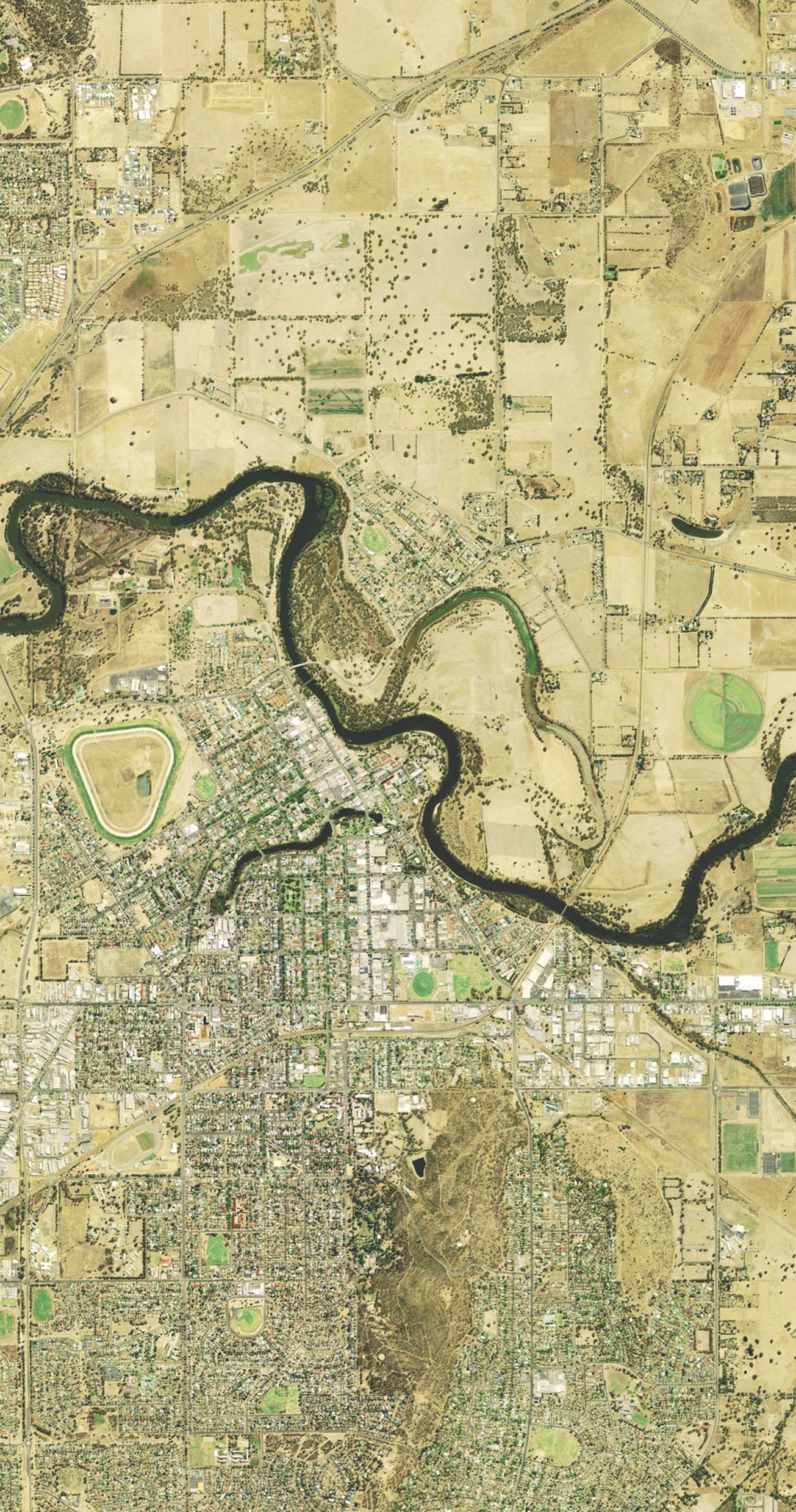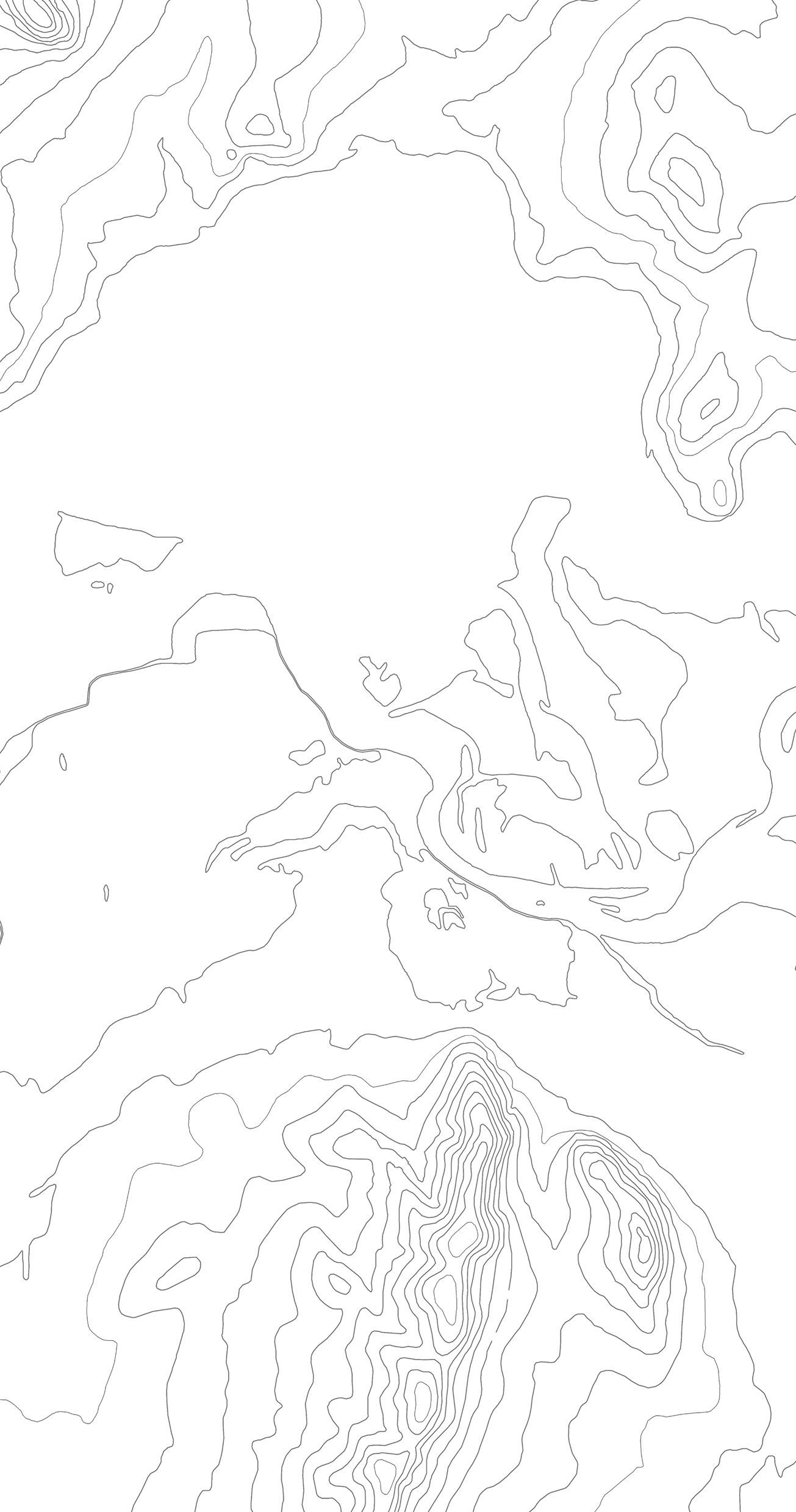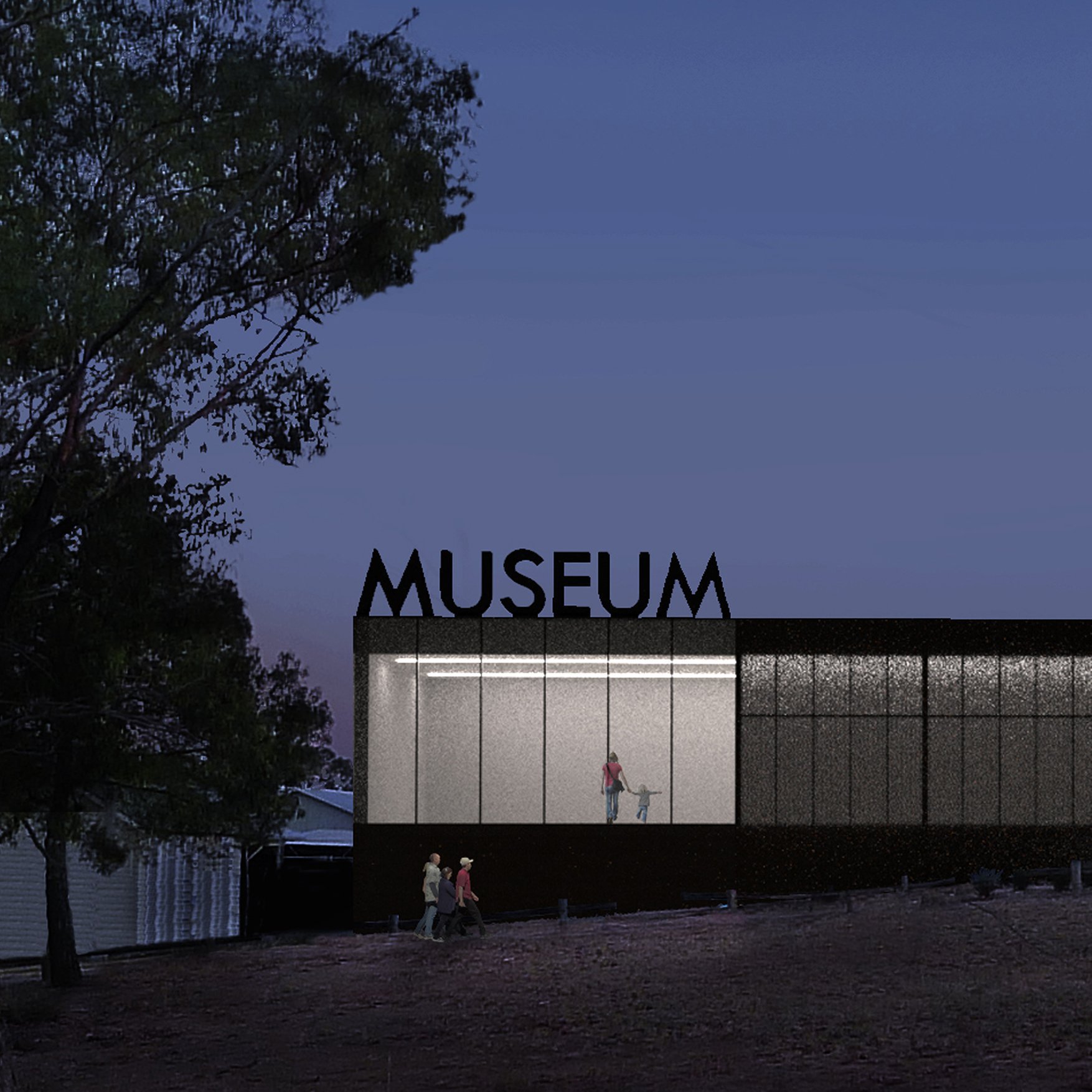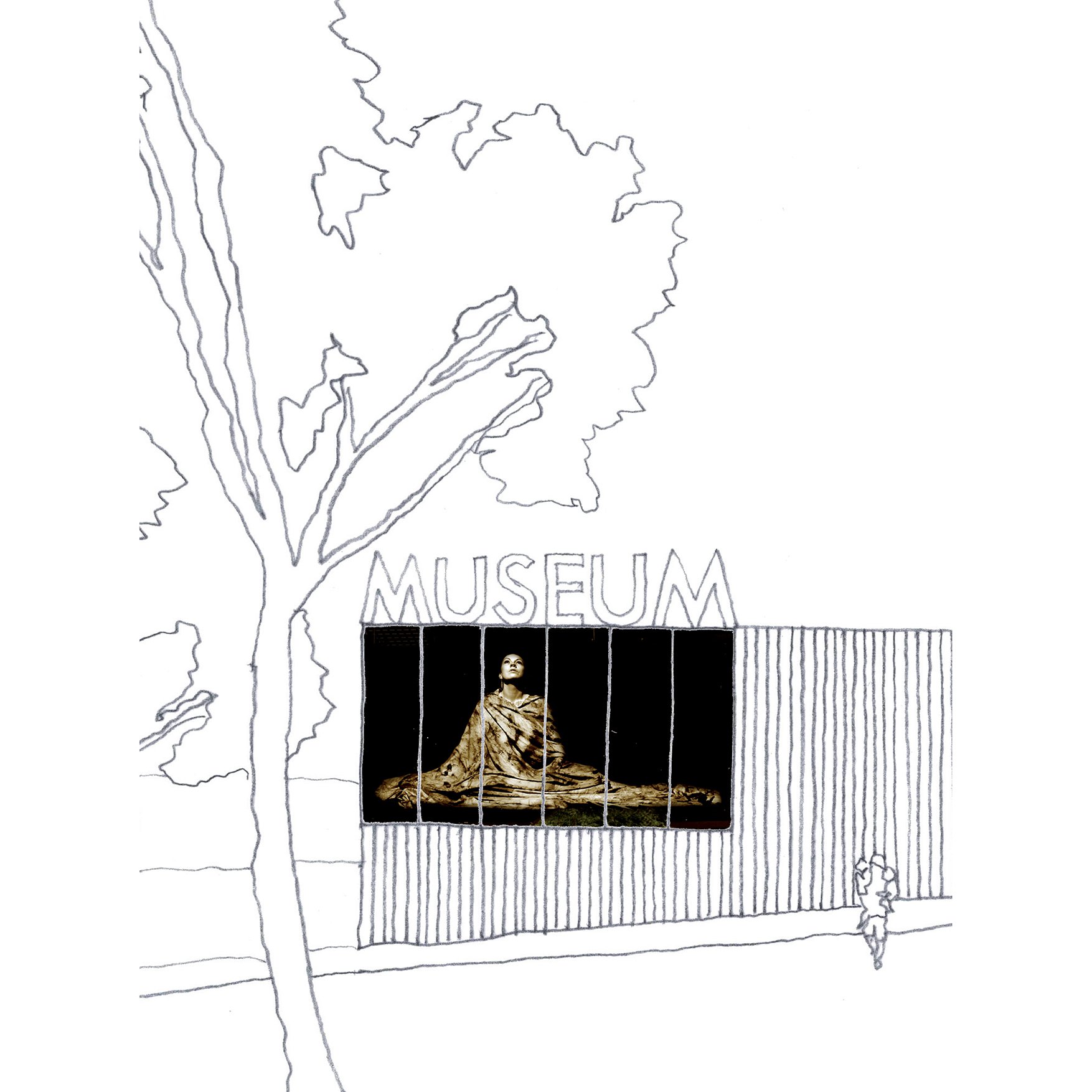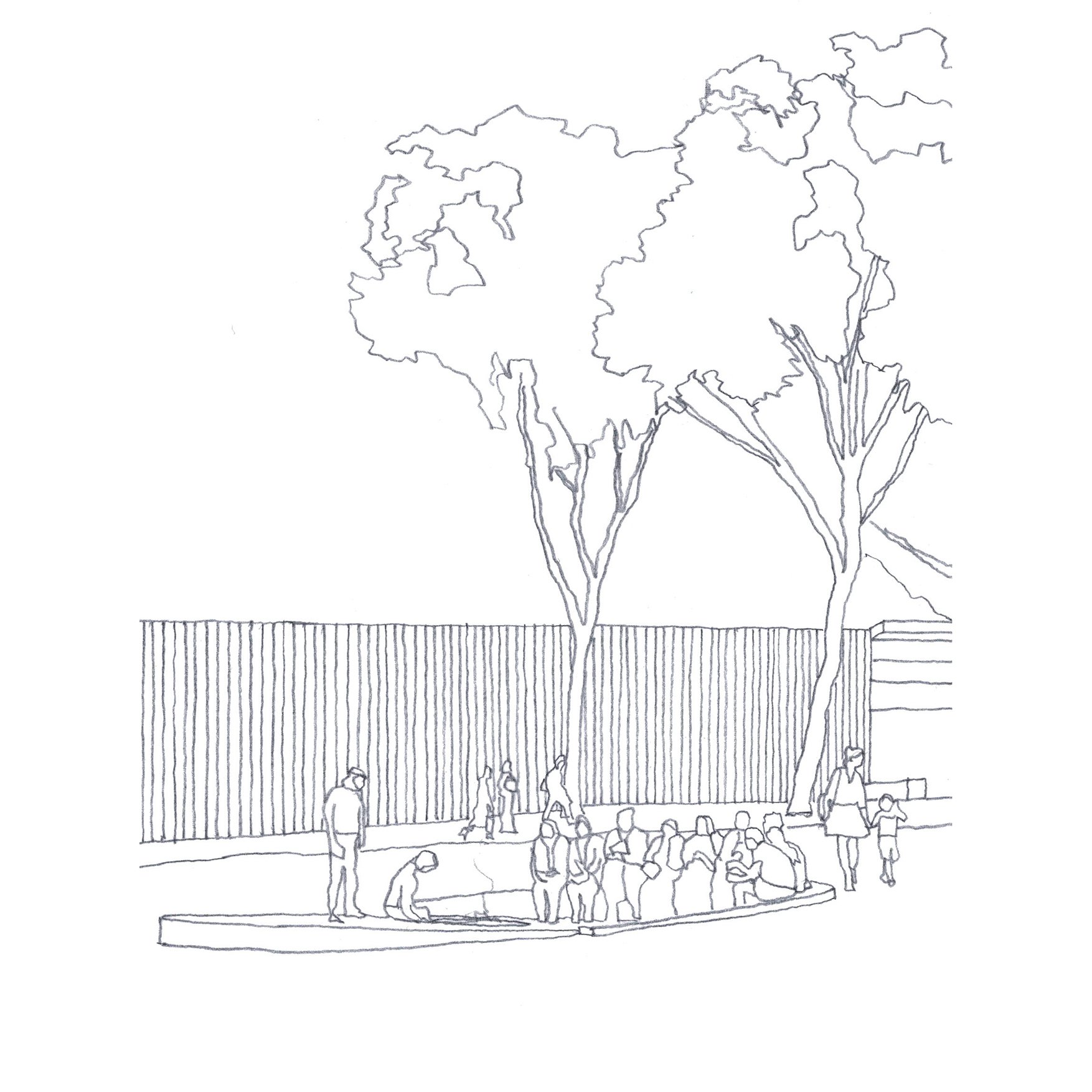Wirdadjuri
In Progress
Anita Panov, Andrew Scott, Justine Anderson, Luke Hannaford & Serena Bomze
Panov—Scott was engaged by Wagga Wagga Council as the lead consultant, architect and landscape architect for the redevelopment of the Museum of the Riverina, Botanic Gardens.
At the time of our engagement the Museum at this site had radically low visitation and operated ostensibly as a storage and administration facility. Our brief in the first instance was to renew the infrastructure for storage and so enable greater surety as to protection of the collection given wider environmental factors such as bushfire, climate control and water ingress. We were also tasked with establishing a design that would reposition of the institution as an outward facing, welcoming facility, one which demonstrates radical accessibility and transparency.
Fortuitously the logic of one tenet of the brief reinforced the other and we were able to reframe the benchmark design that informed the business case to enable a logical and efficient transformation of the precinct via a new masterplan.
The existing processes of the museum were carefully recorded and extensive consultation undertaken with staff, volunteers, experts and indigenous elders to embed their practical experiences in the design development, as well as to help those stakeholders transition to the new facility with enthusiasm and agency.
Working lithely, as is the norm for regional cultural institutions, we established a design that conformed to AMAGA National Standards for Australian Museums and Galleries, HCC Guidelines for Environmental Control in Cultural Institutions, ICCROM RE-ORG Storage Reorganisation Methodology and AMAGA Continuous Cultures, Ongoing Responsibilities guidance.
Our role included facilitating development approval and the detailed construction documentation of the works, which are currently under construction. We were invigorated and challenged by this commission and particularly humbled by our engagement with two people:
The first is Sam Leah, Regional Museum Officer, who with a particular passion for STEM regularly travels throughout the western plains of NSW with her 3d printer, bringing to life the objects of her institution for the next generation of cultural explorers.
The second is Aunty Gail Manderson who so succinctly demonstrated to us that her culture is a living tradition based viscerally in both language and country. On her suggestion, our design placed front and centre a yarning circle and a pit for fire that would enable the speaking of truth and the preparation of traditional foods.
We can think of few more wonderful methods of cultural communication within the framework of a regional museum.
